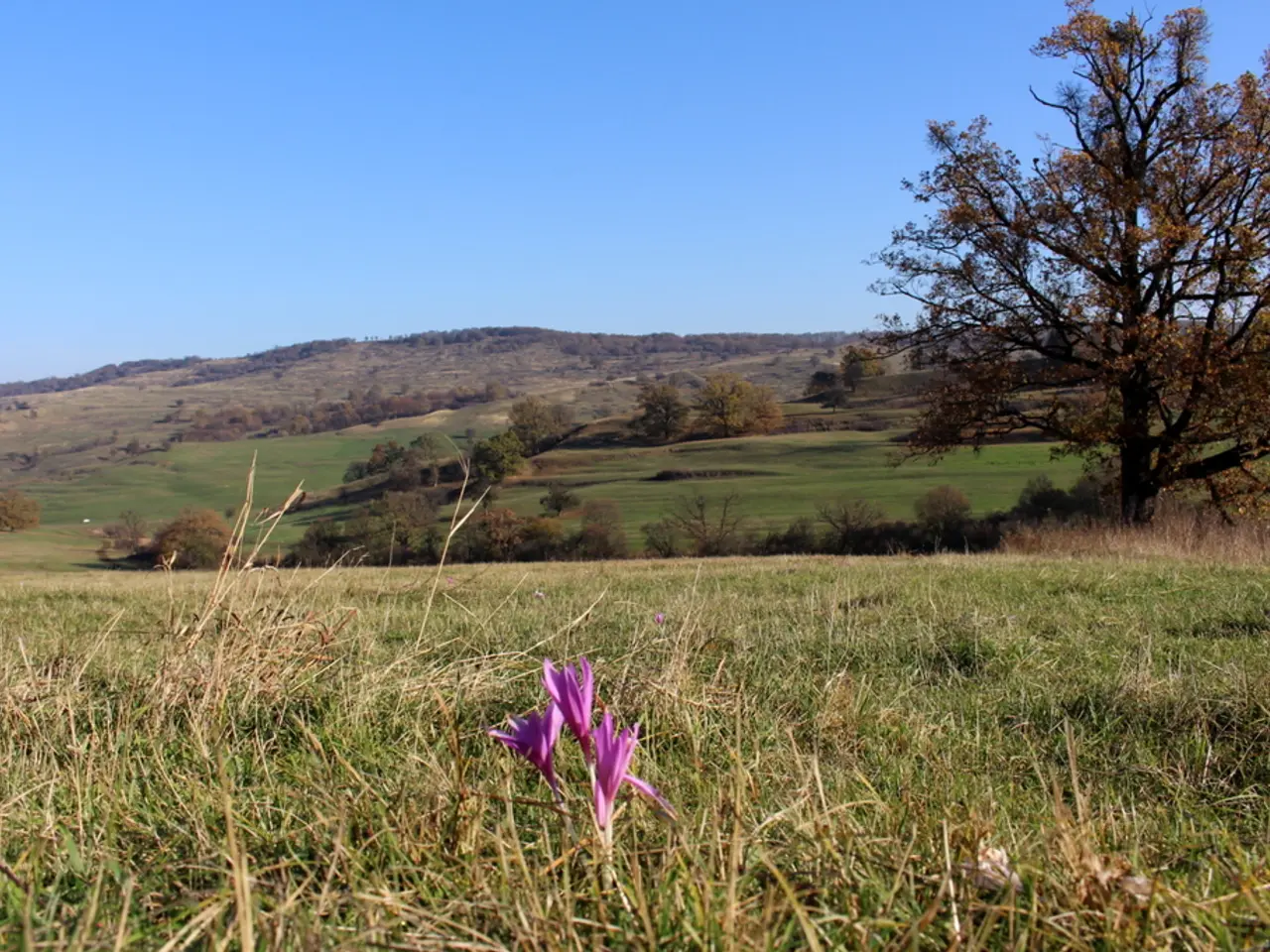Optimal Flower Planting Times in Oklahoma: Essential Information and Advice
In the heart of the Midwest, Oklahoma's unique climate presents challenges for gardeners. However, with the right knowledge and practices, you can create a flourishing flower garden that thrives in this environment.
Young plants are more vulnerable to harsh conditions and require special attention. To prevent excessive drying out of the soil during summer heat, apply a thicker layer of mulch, using organic materials like straw or wood chips.
The early morning is the best time to water, using watering cans or hoses to reduce evaporation. Adjusting watering schedules according to the season is important, with more frequent watering needed in summer due to intense heat, and less required in cooler months.
Soil preparation is crucial. Remove weeds and grass, loosen the soil, and mix in compost to improve nutrient content and drainage. Plant holes should be 2-3 times wider than the root ball but no deeper, and after planting, the soil should be pressed gently and watered well.
The ideal times to plant flowers in Oklahoma are early spring (after the last frost) for summer blooms, and midsummer (July-August) to extend flowering into fall and even November. Popular flower options include Marigolds, Tulips, Daffodils, and native species like coneflowers and Black-eyed Susans. It's important to choose flowers adapted to local conditions, including heat tolerance and soil type.
For garden care, irrigate consistently, especially during the hot and dry summer months, and monitor plants for pests. Temporary shading can help protect delicate flowers from harsh afternoon sun during peak summer heat. Herbs such as basil, oregano, thyme, rosemary, and sage thrive well in Oklahoma gardens and benefit from sunny spots with well-drained soil.
Regular inspection helps spot infestations early and maintain a vibrant, healthy garden. Weeds compete with flowers for nutrients, water, and sunlight. Regular hand-pulling, hoeing techniques, and applying a pre-emergent herbicide in early spring can help keep the garden free from weeds.
Local nurseries in Oklahoma often carry plants suited to the region's conditions. Access to guides, such as the OSU Extension's garden planning guide, can be particularly helpful. These guides highlight the best planting dates and variety selections tailored for Oklahoma.
Protecting plants from extreme temperatures is essential. Shade cloths can be used during scorching days, while frost blankets are used when cold snaps are forecasted. Using windbreaks like fences or strategic plant positioning helps minimize damage from strong winds.
In summary:
- Soil preparation: Remove weeds, loosen soil, add compost.
- Plant sizing: Dig holes 2-3 times wider than root ball, plant at root ball depth.
- Planting times: Early spring post-frost and midsummer (July-August) for extended blooming.
- Flower choices: Heat-tolerant and native species like cosmos, dahlias, zinnias, coneflowers.
- Garden care: Water regularly, mulch to retain moisture, provide shade if needed, monitor pests.
- Consider herbs: Many warm-season herbs thrive in Oklahoma’s climate and can complement flower gardens.
These practices help manage Oklahoma’s challenging climate with early heat, variable rainfall, and frequent winds to create a flourishing flower garden.
To maintain a healthy lifestyle, consider incorporating gardening into your home-and-garden activities. Prepare the soil by removing weeds, loosening it, and mixing in compost for better drainage and nutrient content.
For a vibrant and thriving garden, choose heat-tolerant and native flower species, such as coneflowers and Black-eyed Susans, which excel in Oklahoma's unique climate.




